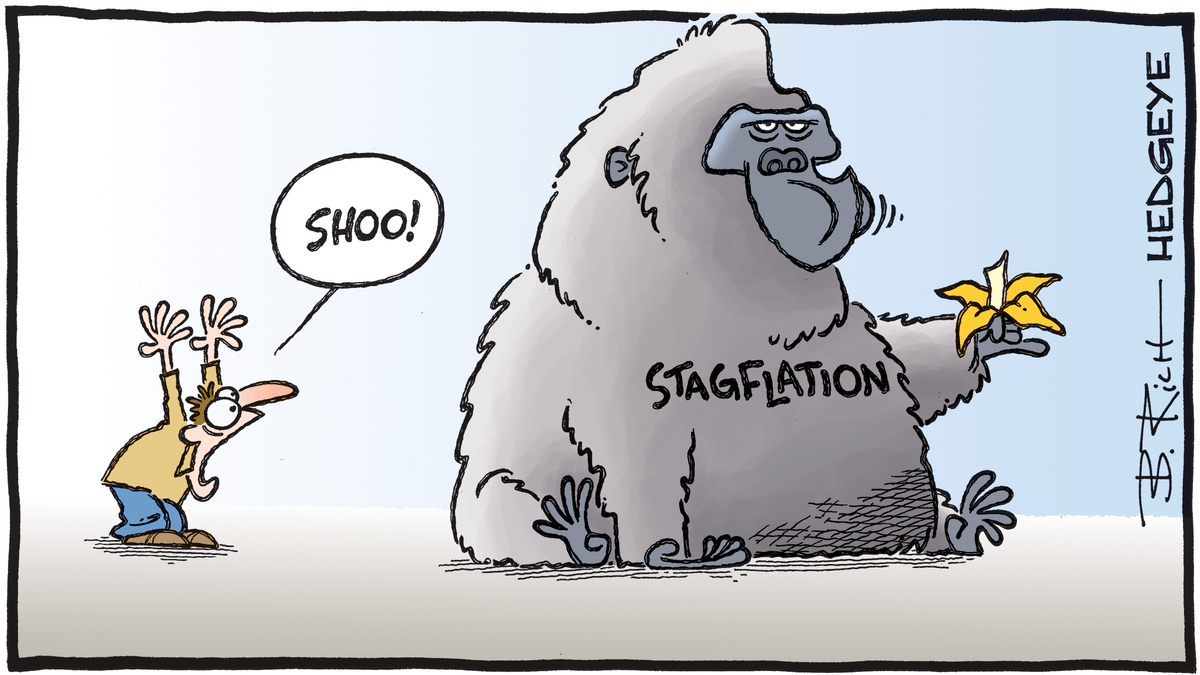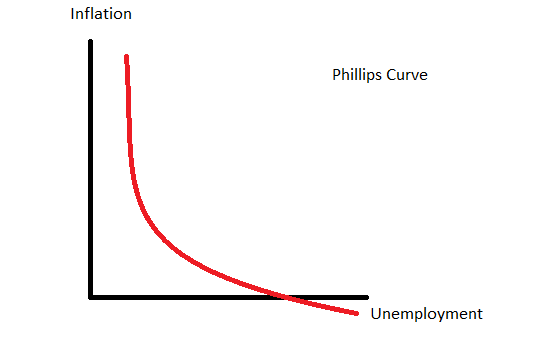Stagflation 101
The term "stagflation" is used frequently in discussions of monetary policy and risks in the post-COVID world.
But what is stagflation and how does it work?
Here& #39;s Stagflation 101!
 https://abs.twimg.com/emoji/v2/... draggable="false" alt="👇" title="Rückhand Zeigefinger nach unten" aria-label="Emoji: Rückhand Zeigefinger nach unten">
https://abs.twimg.com/emoji/v2/... draggable="false" alt="👇" title="Rückhand Zeigefinger nach unten" aria-label="Emoji: Rückhand Zeigefinger nach unten"> https://abs.twimg.com/emoji/v2/... draggable="false" alt="👇" title="Rückhand Zeigefinger nach unten" aria-label="Emoji: Rückhand Zeigefinger nach unten">
https://abs.twimg.com/emoji/v2/... draggable="false" alt="👇" title="Rückhand Zeigefinger nach unten" aria-label="Emoji: Rückhand Zeigefinger nach unten"> https://abs.twimg.com/emoji/v2/... draggable="false" alt="👇" title="Rückhand Zeigefinger nach unten" aria-label="Emoji: Rückhand Zeigefinger nach unten">
https://abs.twimg.com/emoji/v2/... draggable="false" alt="👇" title="Rückhand Zeigefinger nach unten" aria-label="Emoji: Rückhand Zeigefinger nach unten">
The term "stagflation" is used frequently in discussions of monetary policy and risks in the post-COVID world.
But what is stagflation and how does it work?
Here& #39;s Stagflation 101!
1/ Before you dive into stagflation, it may be helpful to understand the basics of inflation.
For a primer on the topic, check out my thread below. https://twitter.com/SahilBloom/status/1293590227064217603">https://twitter.com/SahilBloo...
For a primer on the topic, check out my thread below. https://twitter.com/SahilBloom/status/1293590227064217603">https://twitter.com/SahilBloo...
2/ First, a few definitions.
The "stag" refers to economic stagnation - low growth and high unemployment.
The "flation" refers to inflation.
Putting it together, "stagflation" is an economic condition defined by the presence of low growth, high unemployment, and inflation.
The "stag" refers to economic stagnation - low growth and high unemployment.
The "flation" refers to inflation.
Putting it together, "stagflation" is an economic condition defined by the presence of low growth, high unemployment, and inflation.
3/ For much of history, stagflation was believed to be impossible.
Widely-accepted economic theory suggested there was an inverse relationship between inflation and unemployment (the "Phillips Curve").
But this all changed in the 1970s.
Widely-accepted economic theory suggested there was an inverse relationship between inflation and unemployment (the "Phillips Curve").
But this all changed in the 1970s.
4/ Triggered by the oil crisis of 1973, when an OPEC oil embargo sent oil prices skyrocketing, the US experienced a recession with rising prices.
In the US, inflation doubled in 1973 and hit 11% in 1974. GDP fell for 5 consecutive quarters and unemployment hit 9% in 1975.
In the US, inflation doubled in 1973 and hit 11% in 1974. GDP fell for 5 consecutive quarters and unemployment hit 9% in 1975.
5/ This is a big problem. Why?
Prices are rising but incomes are not. So consumers cannot afford the same amount of goods or services they could before.
Economists even created the Misery Index to quantify the suffering, defined as the sum of inflation and unemployment rate.
Prices are rising but incomes are not. So consumers cannot afford the same amount of goods or services they could before.
Economists even created the Misery Index to quantify the suffering, defined as the sum of inflation and unemployment rate.
6/ Interestingly, since it was first observed, stagflation has become a normal condition during recessions.
Central banks love steady inflation (and fear deflation!).
With inflation as a normal condition, it is not surprising that stagflation has been seen in most recessions.
Central banks love steady inflation (and fear deflation!).
With inflation as a normal condition, it is not surprising that stagflation has been seen in most recessions.
7/ There are many theories on why stagflation occurs.
The first observed instance was precipitated by the oil price shock (a “supply shock”).
But stimulative monetary policy (low rates, money printing) has obviously played a role in subsequent instances.
The first observed instance was precipitated by the oil price shock (a “supply shock”).
But stimulative monetary policy (low rates, money printing) has obviously played a role in subsequent instances.
8/ A prolonged period of stagflation is a credible risk facing the US (and global) economy in the years to come.
Deflation now, stagflation later? Perhaps.
It will be talked about a lot, so I hope this helps you understand the basics.
That was Stagflation 101!
Deflation now, stagflation later? Perhaps.
It will be talked about a lot, so I hope this helps you understand the basics.
That was Stagflation 101!
9/ For more educational threads on money, finance, and economics, check out my meta-thread below. https://twitter.com/SahilBloom/status/1284583099775324161">https://twitter.com/SahilBloo...

 Read on Twitter
Read on Twitter https://abs.twimg.com/emoji/v2/... draggable="false" alt="👇" title="Rückhand Zeigefinger nach unten" aria-label="Emoji: Rückhand Zeigefinger nach unten">https://abs.twimg.com/emoji/v2/... draggable="false" alt="👇" title="Rückhand Zeigefinger nach unten" aria-label="Emoji: Rückhand Zeigefinger nach unten">" title="Stagflation 101The term "stagflation" is used frequently in discussions of monetary policy and risks in the post-COVID world.But what is stagflation and how does it work?Here& #39;s Stagflation 101!https://abs.twimg.com/emoji/v2/... draggable="false" alt="👇" title="Rückhand Zeigefinger nach unten" aria-label="Emoji: Rückhand Zeigefinger nach unten">https://abs.twimg.com/emoji/v2/... draggable="false" alt="👇" title="Rückhand Zeigefinger nach unten" aria-label="Emoji: Rückhand Zeigefinger nach unten">https://abs.twimg.com/emoji/v2/... draggable="false" alt="👇" title="Rückhand Zeigefinger nach unten" aria-label="Emoji: Rückhand Zeigefinger nach unten">" class="img-responsive" style="max-width:100%;"/>
https://abs.twimg.com/emoji/v2/... draggable="false" alt="👇" title="Rückhand Zeigefinger nach unten" aria-label="Emoji: Rückhand Zeigefinger nach unten">https://abs.twimg.com/emoji/v2/... draggable="false" alt="👇" title="Rückhand Zeigefinger nach unten" aria-label="Emoji: Rückhand Zeigefinger nach unten">" title="Stagflation 101The term "stagflation" is used frequently in discussions of monetary policy and risks in the post-COVID world.But what is stagflation and how does it work?Here& #39;s Stagflation 101!https://abs.twimg.com/emoji/v2/... draggable="false" alt="👇" title="Rückhand Zeigefinger nach unten" aria-label="Emoji: Rückhand Zeigefinger nach unten">https://abs.twimg.com/emoji/v2/... draggable="false" alt="👇" title="Rückhand Zeigefinger nach unten" aria-label="Emoji: Rückhand Zeigefinger nach unten">https://abs.twimg.com/emoji/v2/... draggable="false" alt="👇" title="Rückhand Zeigefinger nach unten" aria-label="Emoji: Rückhand Zeigefinger nach unten">" class="img-responsive" style="max-width:100%;"/>



